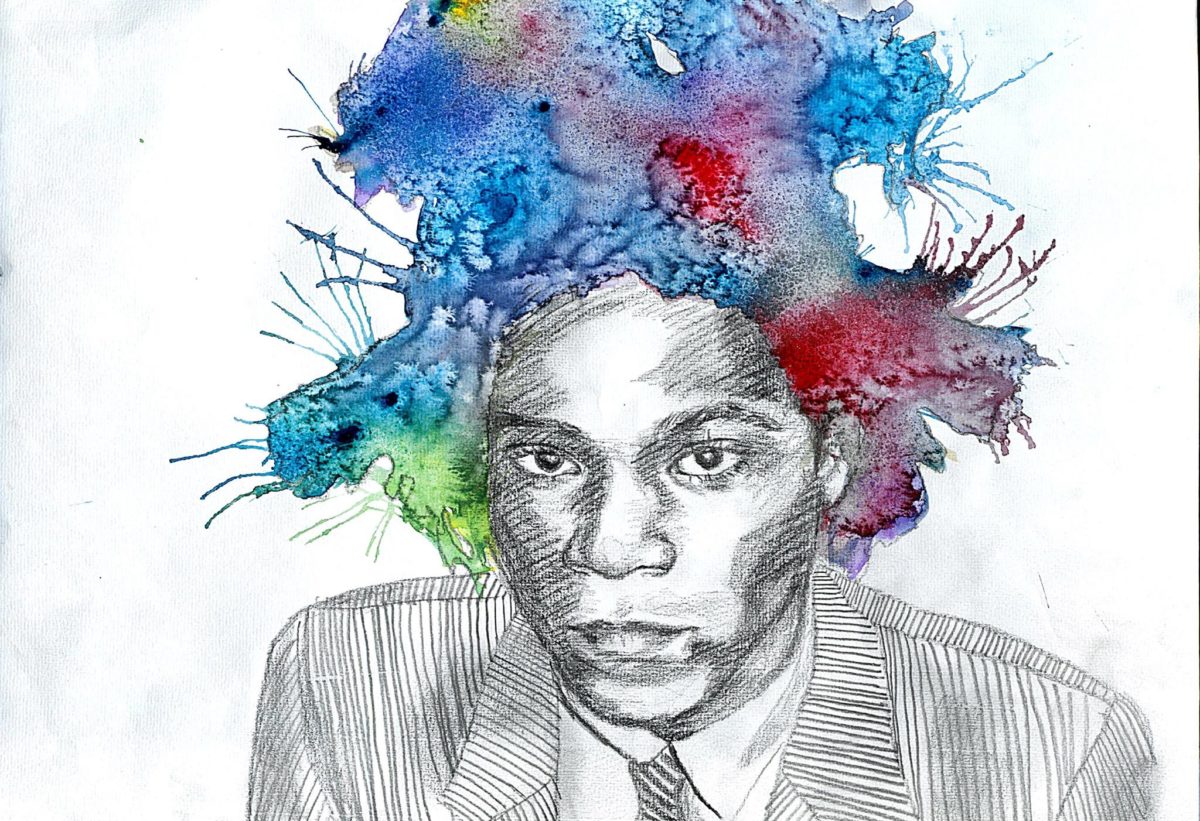I’m not a real person. I’m a legend.
He dated Madonna before she was Madonna and turned up to art openings in $1000 Armani suits splattered with vibrant colors. Jean-Michel Basquiat is probably the most famous artist of the 80s. His fame was absolute, making the jump from New York’s underground graffiti scene to the world’s biggest art galleries. He was the ‘comet of the moment’, as he was once described by a close friend. A portrait about an exceptional artist, whose career was as glamorous and short as the lifespan of these heavenly bodies.
Three days before the Christmas of 1960, Jean-Michel Basquiat is born in Brooklyn, New York City. His father Gerard, a Haitian national, works for an accounting firm. His mother Matilde, who is of Puerto Rican descent, is strongly interested in fashion design and often draws with the young Basquiat. She frequently visits museums with her son and encourages his affi nity in drawing.
“I’d say my mother gave me all the primary things. The art came from her.”
After a car accident, the 8-year-old boy has to spend some time in the hospital. To entertain him during this period, his mother gives him the book ‘Gray’s Anatomy’, which focuses on the human body. This makes a strong impact on his later work, which is marked by images of skeletons and organs. In 1968, Gerard and Matilde separate. Basquiat and his two younger sisters stay with their father and move to Puerto Rico after Gerard’s job promotion six years later. The boy is a difficult teenager: he is rebellious and blossoms into a troublemaker. He runs away from home on two occasions, but is always brought back to his father. In 1976, the family returns to Brooklyn and Basquiat starts attending City-As-School, a progressive school in Manhattan designed for gifted and talented children who find it difficult to follow the traditional educational path. The teenager gets to know the graffitist Al Diaz, a schoolmate. The two boys become best friends and early collaborators. They emblazon aphorisms and philosophical poems on trains. Basquiat and Al Diaz are two of the most popular pupils at their school, both extraordinary creative and with a talent for getting into trouble. During these times, Basquiat also develops the fictional character SAMO (Same Old Shit ), who makes a living out of selling a fake religion. From then on, he and Al Diaz use this term as a tag for their graffiti. The young Basquiat admires stars as Jimi Hendrix, Janis Joplin, and Billie Holliday and has plans to become famous himself:
“Since I was seventeen, I thought I might be a star. I’d think about all my heroes, Charlie Parker, Jimi Hendrix… I had a romantic feeling of how people had become famous.”

After graduating, Basquiat immediately leaves home and befriends other artists, musicians, and filmmakers who frequent New York night club scene. The crowd is beautiful, stylish, and lives the high life. The young artist starts to sell hand-painted postcards, t-shirts, drawings, and collages in SoHo and in front of the Museum of ART, PROSE & POETRY 49 Modern Art, which show a blend of graffiti art and abstract expressionism and have an emphasis on the poignant images of the period: baseball players, the Kennedy assassination, and consumer items. When asked on his inspiration, Basquiat answers: “Real
life, books, television”. In his apartment he writes and draws on
everything he gets hold of – refrigerators, cardboard boxes, and
doors.
In 1979, Basquiat and three friends form the band ‘Gray’. With
their mix of punk, jazz, and synth-pop (often referred to as ‘noise-
music’), they appear in various clubs. One year later, Basquiat
gets his first exhibition as a part of the so-called ‘Time Square Show’ held in one of the empty buildings in Time Square. It is well-received by the public and moreover, he is offered to play the lead role in a film about the downtown art scene as himself. It is called ‘New York Beat’ and was not released until 2000. His fee enables him to buy art supplies and get a space to paint professionally.
He is gaining popularity. Hieroglyphs, cartoons, paint-spatters – in his colorful, vibrant work, Basquiat blends abstract and figurative painting with poetry to discuss power structures and race issues. Further influences are Greek, Roman, Aztec, and African art. In 1981, Basquiat gets his first solo-exhibition in Modena, Italy, called “SAMO”.
“I had some money, I made the best paintings ever. I was completely reclusive, worked a lot, took a lot of drugs. I was awful to people”
In 1983, Basquiat rents a studio of his close friend Andy Warhol. The two artists start to collaborate, but critics pull their shared exhibition to pieces. When Warhol dies in 1987, Basquiat is inconsolable. One year later, on August 12, 1988, he dies as well at the blighted age of 27 in NoHo, falling victim to his heroin addiction. His paintings, however, are priceless and stand the test of time. Basquiat made it – from the sprayer to the player.
Illustration by Jae Hyun Sul, Cosima Klatte